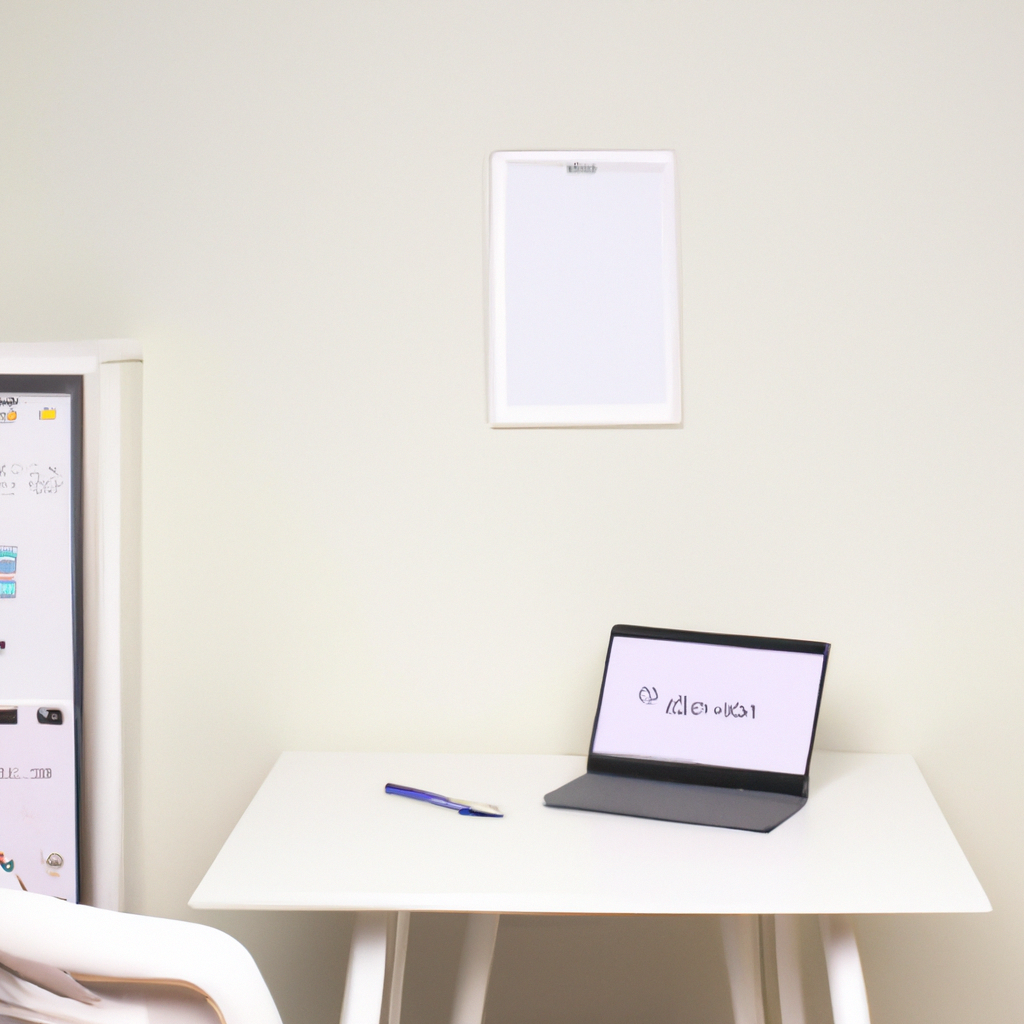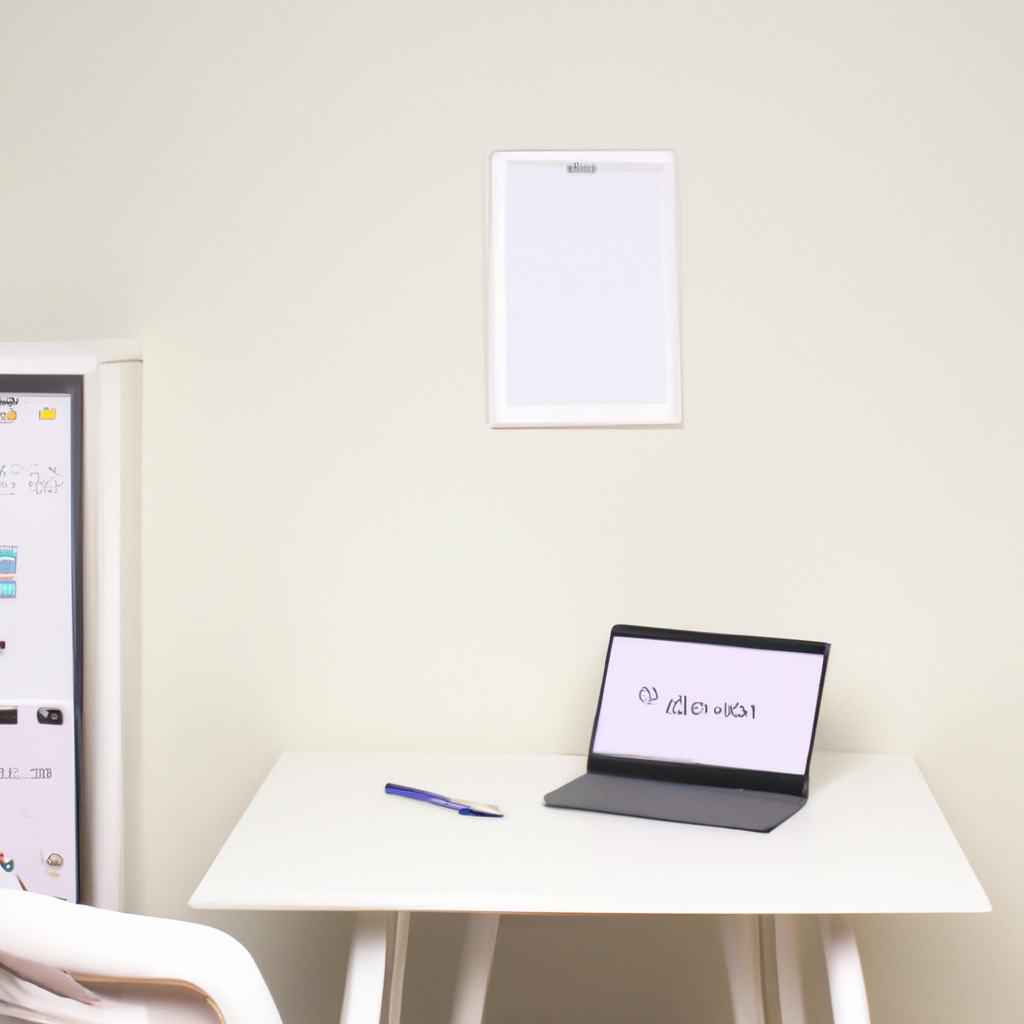Are you looking to set up a productive and frugal home office? Look no further! In this article, we’ll explore six valuable tips that will help you create an efficient workspace without breaking the bank. Whether you’re a freelancer, a telecommuter, or simply someone who wants a productive environment to work from home, these tips will provide you with practical solutions to maximize your productivity and minimize distractions. So, let’s get started and transform your home into the perfect office space!
Choosing the Right Space
Designating a dedicated area
When it comes to creating a productive home office, one of the first steps is to designate a dedicated area for your work. This space should be separate from your living and sleeping areas, as this helps maintain a clear boundary between work and personal life. Ideally, choose a room or a corner of a room where you can set up your workstation and have minimal distractions.
Considering natural light and ventilation
Natural light and ventilation are crucial factors to consider when choosing the right space for your home office. Position your desk near a window or in a well-lit area to benefit from natural light, which not only improves mood and productivity but also reduces eye strain. Additionally, ensure that the space has adequate ventilation to maintain a comfortable working environment.
Minimizing distractions
To create a productive home office, it’s important to minimize distractions as much as possible. Choose a space away from high traffic areas or noisy parts of your home to avoid interruptions. If you live with others, communicate your need for uninterrupted work time and establish boundaries. Additionally, consider noise-canceling headphones or background noise apps to drown out any unwanted sounds.
Making it comfortable
Creating a comfortable workspace is key to maintaining productivity throughout the day. Invest in a supportive and ergonomic chair that provides proper back and neck support. This will help prevent discomfort and potential long-term health issues. Additionally, an adjustable desk that allows you to switch between sitting and standing can improve circulation and reduce the strain on your body. Ensure that the desk height is appropriate for your needs. Finally, add personal touches such as cushions or a cozy blanket to make the space more inviting and comfortable.
Setting Up Ergonomic Workstation
Investing in a good chair
When it comes to setting up your ergonomic home office, investing in a good chair should be a top priority. Look for a chair that offers adjustable height, lumbar support, and a comfortable seat cushion. You’ll be spending several hours each day sitting in this chair, so it’s important to prioritize your comfort and posture.
Selecting an appropriate desk
Choosing an appropriate desk is equally important in setting up your ergonomic workstation. Look for a desk that provides ample surface area for your computer, paperwork, and other work essentials. It should also offer adjustable height options to accommodate both sitting and standing positions. A well-designed desk can help prevent strain on your wrists, neck, and back.
Positioning your computer properly
Proper positioning of your computer is crucial for maintaining good posture and preventing strain on your eyes, neck, and wrists. The top of your computer screen should be at eye level, allowing you to maintain a neutral head position. Position the screen at a comfortable distance, usually around 20 inches away from your eyes. Place your keyboard and mouse within a comfortable reach, allowing your elbows to be at a 90-degree angle.
Using ergonomic accessories
In addition to investing in a good chair and desk, using ergonomic accessories can further enhance your workstation setup. Consider using an ergonomic keyboard and mouse, which are designed to reduce strain on your wrists and hands. Wrist rests and monitor stands can also provide additional support and help maintain proper posture. Experiment with different setups to find what works best for you.

Organizing Your Workspace
Having sufficient storage
A well-organized workspace is essential for maintaining productivity. Ensure that you have sufficient storage options to keep your desk clutter-free. This can include filing cabinets, shelves, or desk drawers where you can store important documents, office supplies, and other work-related items. By having a designated place for everything, you can easily find what you need and avoid unnecessary distractions.
Using organizers and trays
Organizers and trays are valuable tools for keeping your workspace tidy and efficient. Use desk organizers to store pens, paperclips, and other small items that would otherwise clutter your desk. Trays can be used to sort and organize paperwork, making it easier to find and access important documents. By having a systematic organization system, you can optimize your workflow and save time searching for things.
Implementing a filing system
Implementing a filing system is crucial for managing paperwork and maintaining an organized workspace. Use file folders or binders to categorize and store important documents. Label each folder or binder with a clear and descriptive title to make it easy to locate specific files. Regularly review and declutter your files to ensure that you’re only keeping what’s necessary.
Maintaining a clutter-free environment
A clutter-free environment is essential for maintaining focus and productivity. Regularly declutter your workspace by removing any unnecessary items. Keep your desk surface clear and only have the items you need for your current tasks within reach. Consider implementing a “one in, one out” rule, where you remove an item before bringing in a new one. By maintaining a tidy workspace, you create a more efficient and conducive environment for work.
Establishing a Routine
Setting regular working hours
Establishing a routine is essential for creating a productive home office. Set regular working hours and stick to them as much as possible. Define a start and end time for your workday and communicate this schedule with others who may share your living space. Having a consistent routine helps create structure and sets clear boundaries between work and personal life.
Creating a to-do list
Creating a to-do list is a simple yet powerful tool for organizing your tasks and staying on track. Start each day by listing the tasks you need to accomplish and prioritize them based on importance and deadlines. Break down larger tasks into smaller, manageable steps to make them more achievable. As you complete each task, check it off your list, providing a sense of accomplishment and motivation.
Prioritizing tasks
Prioritizing tasks is crucial for effectively managing your workload and maximizing productivity. Identify the most important and urgent tasks that require immediate attention. Allocate time and focus on these tasks first. By prioritizing, you ensure that you’re dedicating your energy to the most impactful activities, rather than getting overwhelmed by less significant tasks.
Taking regular breaks
Taking regular breaks is essential for maintaining focus and preventing burnout. Schedule short breaks throughout your workday to rest and recharge. Step away from your desk, stretch, or engage in a brief physical activity. Use these breaks as an opportunity to clear your mind and avoid getting stuck in a mental rut. Taking breaks can actually improve productivity by increasing your overall energy and focus.

Ensuring Technology is in Order
Reliable internet connection
A reliable internet connection is crucial for a productive home office, especially if your work involves online communication, research, or file sharing. Invest in a high-quality internet service provider that offers a stable and fast connection. If possible, connect your computer directly to the router with an Ethernet cable to ensure the strongest and most consistent signal.
Investing in necessary equipment
Ensure that you have all the necessary equipment to carry out your work effectively. This may include a fast and reliable computer, a printer, a scanner, or any industry-specific tools and software. Assess your job requirements and invest in high-quality equipment that will support your productivity and meet your needs.
Organizing cables and cords
The sight of tangled cables and cords can be visually distracting and can create a cluttered atmosphere. Take the time to organize your cables and cords to create a clean and organized workspace. Use cable clips, cable management boxes, or cable sleeves to keep cables neatly bundled and out of sight. This not only improves the aesthetics of your workspace but also makes it easier to access and connect your devices.
Backing up data regularly
Backing up your data regularly is essential to ensure that your work is protected from potential hardware failures or accidents. Use cloud storage solutions, external hard drives, or network-attached storage (NAS) devices to create backups of your important files and documents. Schedule automatic backups or establish a routine to manually back up your data to minimize the risk of data loss.
Implementing Productivity Apps and Tools
Using project management software
Project management software can help streamline your workflow and keep track of tasks and deadlines. Consider using tools like Trello, Asana, or Monday.com to organize your projects, assign tasks, and collaborate with team members. These software solutions can increase efficiency and communication, enabling you to stay on top of your work and meet your goals.
Utilizing time tracking apps
Time tracking apps are valuable tools for monitoring how you spend your time and identifying areas for improvement. Apps like Toggl, RescueTime, or Clockify allow you to log the time you spend on various tasks and projects. By tracking your time, you can gain insights into your work habits, eliminate time-wasting activities, and optimize your productivity.
Leveraging communication tools
In a remote work environment, effective communication is crucial. Utilize communication tools such as Slack, Microsoft Teams, or Zoom to stay connected with colleagues and clients. These platforms facilitate instant messaging, video conferencing, and file sharing, allowing for seamless collaboration and efficient communication.
Exploring productivity-focused apps
There are numerous productivity-focused apps available that can help you stay organized, focused, and motivated. Explore apps like Evernote for note-taking and organization, Todoist for task management, or Forest for time management and focus. Experiment with different apps to find the ones that best suit your work style and enhance your productivity.
Maintaining a Healthy Work-Life Balance
Setting boundaries between work and personal life
Maintaining a healthy work-life balance is essential for your overall well-being and productivity. Establish clear boundaries between work and personal life by setting designated work hours and separating your workspace from your living areas. Communicate these boundaries with others in your household and avoid the temptation to work outside of your scheduled hours.
Taking regular breaks and indulging in hobbies
It’s important to recharge and take breaks from work to avoid burnout and maintain motivation. Use your breaks to engage in activities that you enjoy, such as hobbies or physical exercise. These activities not only provide a mental break but also contribute to your overall well-being and help reduce stress.
Avoiding overworking
While it can be tempting to work long hours when you’re at home, overworking can lead to exhaustion and decreased productivity. Be mindful of your work hours and avoid the temptation to work late into the night or on weekends. Set clear boundaries and prioritize self-care to maintain a healthy work-life balance.
Establishing a separate workspace
Creating a physical separation between your work and personal life can significantly contribute to maintaining a healthy work-life balance. If possible, establish a separate workspace that is dedicated solely to work activities. This can be a spare room, a converted corner, or a room divider in your living area. By physically entering and leaving your workspace, you signal the transition between work and personal time, helping you mentally disconnect from work when needed.
Establishing Clear Communication Channels
Using video conferencing tools
Video conferencing tools have become essential for remote work and virtual collaboration. Platforms like Zoom, Microsoft Teams, or Google Meet facilitate face-to-face communication, allowing for more connection and effective collaboration. Utilize these tools for team meetings, client calls, or brainstorming sessions to maintain clear and efficient communication.
Setting up instant messaging apps
Instant messaging apps are valuable for quick and informal communication with colleagues and team members. Platforms like Slack, Microsoft Teams, or Google Hangouts allow for real-time messaging, file sharing, and team collaboration. Utilize these apps to ask quick questions, share updates, or have informal conversations, reducing the need for lengthy email exchanges.
Scheduling regular check-ins
Regular check-ins are crucial for maintaining open communication and ensuring that tasks and projects are on track. Schedule periodic meetings or one-on-one sessions with your team members or supervisor to discuss progress, address any concerns, and provide updates. These check-ins help foster a sense of accountability, alignment, and support within the virtual work environment.
Promoting effective virtual collaboration
Effective virtual collaboration is essential for remote teams. Utilize collaborative tools and platforms like Google Drive, Microsoft SharePoint, or Dropbox to facilitate file sharing, real-time editing, and version control. Establish clear communication guidelines and project management processes to ensure that everyone is aligned and working towards a common goal.
Creating an Inspiring Environment
Adding plants for improved air quality
Bringing plants into your home office not only adds a touch of nature to your workspace but also improves air quality. Plants naturally filter the air by removing toxins and releasing oxygen, creating a healthier and more inspiring environment. Choose low-maintenance plants such as succulents or peace lilies that thrive in indoor settings and require minimal care.
Decorating with artwork or motivational quotes
Incorporating artwork or motivational quotes into your home office can inspire creativity and boost your mood. Hang paintings or prints that resonate with you and evoke a positive emotional response. Alternatively, display motivational quotes or affirmations that serve as daily reminders of your goals and aspirations.
Choosing calming colors for the workspace
The choice of colors in your home office can significantly impact your mood and productivity. Opt for calming colors such as soft blues, greens, or neutrals that promote a sense of tranquility and focus. Avoid overly bright or distracting colors that may hinder concentration.
Personalizing the area with meaningful items
Personalizing your home office with meaningful items can create a sense of comfort and connection. Display photographs, mementos, or items that hold sentimental value. Surround yourself with objects that inspire you and represent your values, helping to create a more personal and engaging workspace.
Taking Care of Mental and Physical Well-being
Maintaining a good work-life balance
Maintaining a good work-life balance is crucial for your mental and physical well-being. Ensure that you have time and energy for activities and relationships outside of work. Engage in hobbies, spend time with loved ones, and prioritize self-care to recharge and prevent burnout.
Practicing stress management techniques
Working from home can come with its own set of stressors. It’s important to practice stress management techniques to maintain your mental well-being. Incorporate techniques such as meditation, deep breathing exercises, or mindfulness practices into your daily routine. These techniques can help reduce stress, increase focus, and improve overall well-being.
Incorporating exercise breaks
Regular exercise is essential for maintaining physical health and boosting productivity. Schedule exercise breaks throughout your workday to incorporate physical activity into your routine. This can include yoga, stretching, going for a walk, or engaging in a quick workout. Physical activity not only improves physical health but also enhances mental clarity and focus.
Prioritizing self-care
Self-care should be a priority when working from home. Take time to engage in activities that nourish your body and mind, such as reading, taking a bubble bath, or practicing a hobby. Prioritizing self-care ensures that you’re taking care of your well-being, which in turn enhances your productivity and overall satisfaction with your work.

